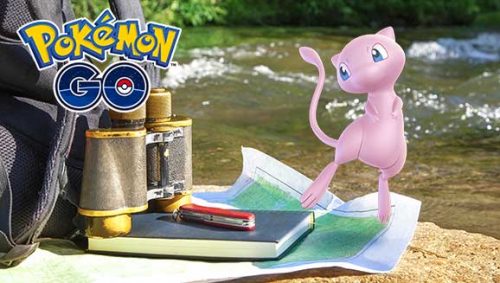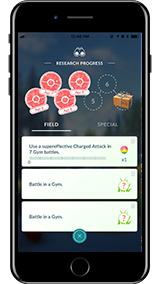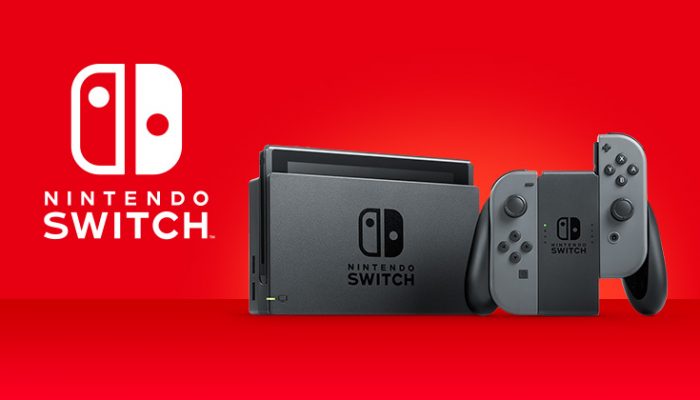 Strategy on the latest Pokémon Go feature.
Strategy on the latest Pokémon Go feature.
☆ NintendObs Weekly – Monday, April 16, 2018 – Sunday, April 22, 2018.

Master Pokémon GO Research
Research is the newest craze in Pokémon GO, and you’ll find it makes finding wild Pokémon even more fun and rewarding. Research is the new key to finding powerful Pokémon, rare items, and even encountering Legendary and Mythical Pokémon!
Whether you’re new to research or looking to make the most of this exciting new feature, we’re here to help. Read on to maximize your rewards from both Field Research and Special Research.
Research 101
There are two types of research that Trainers can help Professor Willow with: Field Research and Special Research. Field Research spans almost every activity in Pokémon GO. These tasks can be found by visiting PokéStops, and you can complete lots of them each day. The rewards vary—even for the same task—including almost any item, Stardust, or even an encounter with a wild Pokémon. Harder tasks normally yield better rewards.
Special Research requires more effort to complete, and these tasks will be assigned to you by Professor Willow himself. He’ll pop up in the app whenever he has a new research task for you to take on. You can check your current research tasks by tapping the binoculars icon above Nearby Pokémon. Each Special Research task can be completed only once.
The first batch of Special Research quests focuses on Pokémon originally discovered in the Kanto region. It won’t be easy, but the grand prize is worth working for—a chance to catch Mew, the first Mythical Pokémon available in Pokémon GO! You’ll also earn fantastic items as you complete stages of Special Research, including Rare Candy, Stardust, and XP.
Plan Ahead for Special Research
Each player receives the same Special Research tasks from Professor Willow in the same order, so you can complete several objectives more easily with some planning.
First, be ready to trigger some tough Evolutions. For example, if you plan on catching Mew, you’re going to need to evolve Magikarp, so conserve your Magikarp Candy. You’ll need to evolve a Magikarp into Gyarados as part of Mew’s Special Research (you must do this during Special Research—having already evolved a Magikarp into a Gyarados prior to taking on the Special Research task won’t satisfy the requirement), and at 400 Magikarp Candy per Evolution, you don’t want to be caught empty-handed. You’ll also need to be level 25 and have 100 Pokémon originally discovered in the Kanto region registered in your Pokédex, so be sure to track down any Nearby Pokémon you haven’t registered.
You’ll need to deal with many other tasks as they come around, and there are more tricks to speed things along. Don’t forget that different Buddy Pokémon find Candy at different rates, so you might want to switch to a buddy like Swablu or Wailmer that finds Candy every kilometer if you’re looking to rush things along. And if you’re the type of player who normally only takes on Raids against Legendary Pokémon, don’t forget that you can complete research tasks with easier Raids that can be completed by smaller groups.
Complete Field Research Daily
Completing Field Research won’t get you any closer to Mew, but Research Breakthroughs provide some serious motivation to head out into the field. The first Field Research task you complete each day will net you a special stamp. You’ll make a Research Breakthrough each time you collect seven of these stamps, and with each breakthrough comes some fantastic rewards.
The most exciting reward for making a Research Breakthrough is an encounter with a rare Pokémon. As of this posting, the Legendary Pokémon Moltres awaits dedicated researchers—but different Pokémon could be available in the future. Moltres is exceptionally rare, and Moltres Candy is hard to come by, so take advantage of this opportunity. You’ll also score a bounty of XP, Stardust, and some items.
Don’t worry if you miss a day of Field Research. Unlike the streaks for catching Pokémon and for visiting PokéStops, your progress toward a Research Breakthrough won’t be reset if you can’t go exploring one day. Field Research tasks don’t count as complete until you accept their reward, so you can even finish a Field Research objective one day and then turn it in the next day to earn a quick stamp.
Rack Up Rare Candy
Undertaking research is also a great way to earn some Rare Candy—one of the most valuable items in Pokémon GO. Rare Candy can become any other type of Candy, helping you to power up or evolve whichever Pokémon you like. Raid Battles were previously the only way to collect Rare Candy, but now you can also earn some through research.
You’ll sometimes earn a few Rare Candy when you make Research Breakthroughs. You can receive five more by completing enough Special Research tasks. Certain Field Research tasks may also reward this incredible item—make sure to complete these tasks if you receive them!
Don’t Fear Missing Out
It’s fun to try to complete each Field Research task you’re given, but remember that you can only hold up to three tasks at once. If a task seems too tough to complete for its reward, you can drop it by tapping the trash can icon in the upper-right corner of the task.
Be discerning if you get a bunch of tasks to catch Pokémon you rarely see. There’s no penalty for dropping Field Research tasks, and you can retrieve them at the same PokéStop you got them from until the end of the day if you change your mind.
The Pokémon in Question
If you see a question mark on some tall grass as a Field Research reward, you could be in for a treat. Once you finish your task, you’ll jump into an encounter with a wild Pokémon. Dozens of different Pokémon can be encountered this way, many of which were first discovered in the Kanto region—perfect for Mew’s Special Research.
It’s worth catching these Pokémon even if you happen to have some duplicates. Like Raid Bosses and Pokémon hatched from Eggs, Pokémon you encounter through Field Research tend to perform better in battle than other wild Pokémon do. These encounters aren’t affected by the weather.
Field Research tasks can yield some extremely rare Pokémon. Think twice before discarding difficult Field Research tasks like “Catch a Dragon-type Pokémon,” “Win 5 Raids,” or “Make 3 Excellent Throws.” It might take you a while to complete them, but your hard work could lead to encounters with rare Pokémon like Dratini, Typhlosion, and Larvitar!
Research Efficiently
You can often complete tasks with similar objectives at the same time. This can be a great way to get lots of research done quickly—and it might encourage you to complete tasks you’d normally avoid, too.
Field Research tasks to make Nice, Great, or Excellent Throws or to throw Curveballs can be completed simultaneously. If you have Field Research tasks to make, Nice Throws, Great Throws, and Excellent Throws, making an Excellent Throw would advance all three quests at once.
If all your current tasks require you to make accurate throws, you may want to avoid catching the Pokémon. For instance, you could complete Field Research to make five Nice Throws by hitting the same Pokémon with five Nice Throws if it keeps breaking out of your Poké Balls. Large, feisty Pokémon like Nosepass and Onix make easy targets for this sort of task. Just don’t flee from the encounter yourself, which will void your progress.
That’s enough research about research—time to get out there. Good luck, Trainers!
— Pokémon News
Source: Pokémon.
At NintendObserver, the comments are on Discord.
Click on Community to learn more. 🙂
…
…Wanna play? Buy a 3DS.
That being said, click on Pokémon Go for everything you need to know about the game. 😀









